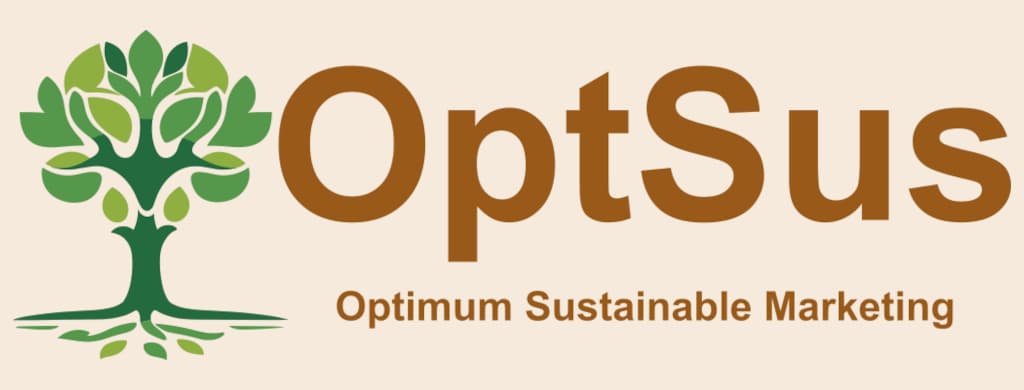
Over the years, I have seen five common SEO mistakes come up again and again.
- No Clear Goal
- Lack of Promotion
- Big Beautiful Images
- robots.txt
- Redirects & 404 Errors
The first three items are less technical and much easier for anyone to address with proper planning and design. However, the last two do require a small amount of technical skill. This guide will help you understand each of these common SEO mistakes – and how you can avoid them.
No Clear Goal
What do you want visitors on your site to do? Do you have a clear path mapped out for them on each page?
Don’t be embarrassed if you find it difficult to articulate what your exact goals are with your website and each piece of content. I have worked with large and small companies that struggle with this very question. However, you do need to start thinking about and defining your goals.
First, you must have a goal before you can measure success or failure with any marketing campaign. SEO is no different and you need to identify a clear goal.
The Big Goal
The exact goals of your marketing campaigns and the various pages of your site may be different. Some content will be created to build your audience, other pages will be designed to sell products and services.
Begin by identifying the primary goal that your whole website is working toward. This could be something like:
- Increasing sales of products or services
- Building awareness for a cause, organization, or project
- Sharing your ideas with others
Not all websites have a direct commercial goal. For example, professors at a research university may want to share their findings with others in their field, or a pharmaceutical company may want to share information about their products with prescribing physicians. In both of these cases, a financial transaction does not occur directly on the website. However, they have a clear goal of sharing information and research.
Smaller Goals and KPI
After you have a clear goal for the site as a whole, you can begin to delve into the goals of individual sections and pages of the site. Some examples include:
- A products page with the goal of communicating the product options available.
- Landing pages that collect contact information for leads.
- The sales page that completes a financial transaction making a lead become a customer.
- An about page that communicates your company vision and inspires trust in your brand.
Once you have these goals mapped out, you can identify key performance indicators (KPI) that measure the success of your site to deliver on these goals. This is where goal setting connects with SEO.
Connecting Goals and SEO
There are an infinite number of keywords you can work to rank for in search. For example, this random set of letters “kjlbafuywe” could be considered a keyword – and some site will rank for those letter I just banged out on my keyboard. Many people see SEO as the act of simply ranking for keywords. In this view, being in the top position for a keyword is considered a win. However, it’s more important to drive the KPI for your business than to simply rank for a keyword.
The better way to optimize your site for search is to focus on changes that move the KPI you define after setting the goals for your site and content. You will find that getting into the top spot for a particular keyword does not actually drive your KPI, while being in the third spot for a different word has a significant impact.
After you define your goals you can identify KPI and optimize your site to not simply rank for keywords, but optimize search to grow your business. This is sustainable marketing.
Lack of Promotion
There is a glut of content already on the internet… Why should anyone look at what you just created?
Imagine walking into a library filled with all the books that have ever been written. Now you need to pick a place to start reading. This overwhelm of information makes it very difficult to select a single book to begin with.
Now, imagine walking into the same library with a list of recommended books supplied by a friend. You can go straight to the topics and books on that list and start reading. Their recommendation gives you somewhere to start, and you trust their advice because the are a friend.
So many people create content for their sites and just let it sit there, waiting for search engines to find it and send people their way. However, you need to get out and promote your own content first.
Sharing Content
When you share your content on social media and with your mailing list, the people that already know you and trust your recommendations begin to read what you have created. If they like it, they share the recommendation with their friends – and this cycle continues. As these links are shared, search engines begin to find links to your content more frequently and prioritize it over those pages that were created without any promotion.
A good rule to work with is that 90% of your time should be spend promoting what you have already created and 10% should be spend creating new content. Therefore, if you spend an hour writing a new blog post – you need to spend 9 hours promoting and sharing that content.
Big Beautiful Images
Sliders and big hero images look great when you are designing a site. However, they typically add little value to the visitors coming to your website.
As an experiment, if you don’t believe me now, spend the next week tracking your own habits on the internet. When you come across a website with a big image at the top, what do you do:
- Stop and appreciate the artwork at the top of the page
- Quickly scroll to the content below and look for an something related to the reason you’re visiting this site
Now, I’m not saying that you should not have images on your website – quite the opposite. Good SEO requires a multi-media experience with text, images, and videos throughout the site.
I am saying that you need to have very clear and strong reasons for including hero images and sliders on your page. Even more, you need a very very strong argument if you want to have these elements at the top of every page on your site.
Remove Sliders
From a resource perspective, sliders cause your site to load more slowly (hurting your SEO) and don’t offer any improvement in conversion rates or engagement on the site. This clearly shows that the decision between having a slider or not comes down to design aesthetic. It even moves the conversation from business goals over to a debate between form and function on your website. Do you want a site that delivers results, or one that looks a certain way at the expense of results?
Hero Images, Maybe
For most people, this should move the conversation away from sliders and now we can delve into hero images. In this case, there is no technical issue with using a hero image – but there are a lot of implementation problems. To be effective, a hero image needs to be relevant and able to clearly convey the idea, product, or service at a glance. This means hero images should be used sparingly and with great planning – not simply scattered across every page of your website.
Sliders should never be used anywhere on your site, but hero images can have their place if they are well thought out. Excessive or unclear hero images don’t add any value to your site and could actually confuse visitors.
robots.txt
Do you know what the difference is between the two robots.txt code snippets below?
User-agent: * Disallow: /
User-agent: * Disallow:
In the top example, Disallow: / tells all the search engines to stop crawling this site – effectively removing it from the search results. While this is not something that most people would want for their website – it is a rather common problem I have had to help several clients correct. Small and large businesses often get this wrong, so it is more common than you may think.
There are other modifications to the robots.txt file that could be causing problems for your site, but this is by far the most common issue for clients coming to OptSus.
Redirects & 404 Errors
This is one area that can get a little complicated. Rather than delving into what you need to do to fix problems with redirects and 404 errors, we’ll stick to how you can avoid them in the first place.
Over the lifetime of your business, it will be necessary to remove or rearrange content on your website. When this is done, it’s very important to map out the links to all the past and present pages on your site. These will each need to direct traffic to similar pages on your future site, or related pages on the site.
All About Apples
For example, you may have a food blog that has content about apples. There are posts about green apples, red apples, and yellow apples. However, you have decided to stop discussing yellow apples on your site and remove that content. The links to those pages should not simply drop visitors a pages stating “404 Not Found”. That traffic needs to go somewhere and you need to map that out before launching the new version of your site.
Using the food blog example from above, the visitors looking for content about yellow apples could be directed to information about red or green apples. However, this is not directly related since red and green apples are quite different from yellow apples. It may be better to direct these visitors to the more general page about apples, or you may need to create a page that explains why your are moving away from discussing yellow apples and suggest these visitors consider green or red apples instead.
301, 302, & 404
I think that example has been well used at this point, so let’s move away from discussing apples. Essentially, you need to use redirects to send visitors to the most relevant content on your site if you plan to consolidate, remove, or rearrange the information on your site.
While you’re making these changes, it is also important to avoid creating redirects that are not necessary. If you have a page on your current site that talks about conference you attend, and it is located at /conferences – the new site should not move that information to /conferences-2 for no particular reason. When implementing a 301 or 302 redirect, you need to have a very clear and valid reason for redirecting that traffic.
While redirects are less harmful to your SEO than 404 errors, they do cause your page to load a little slower and have a small negative impact to SEO. If you can avoid using a redirect, do so. However, a redirect is much better than a 404 page.
SEO Audit
In reading through this list of SEO mistakes, are you beginning to find some error with your site that you need help with?
OptSus Marketing offers a few ways to assist you with an SEO audit.
- Sign up for WordPress Management and use the marketing tools provided to conduct and SEO audit of your site.
- Contact us about performing an SEO audit for your site. We will give you a report listing any SEO mistakes we find, and we can help you address these problems to improve your site.
